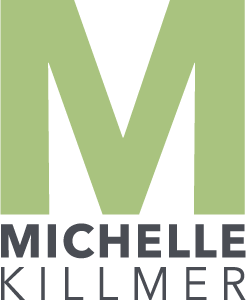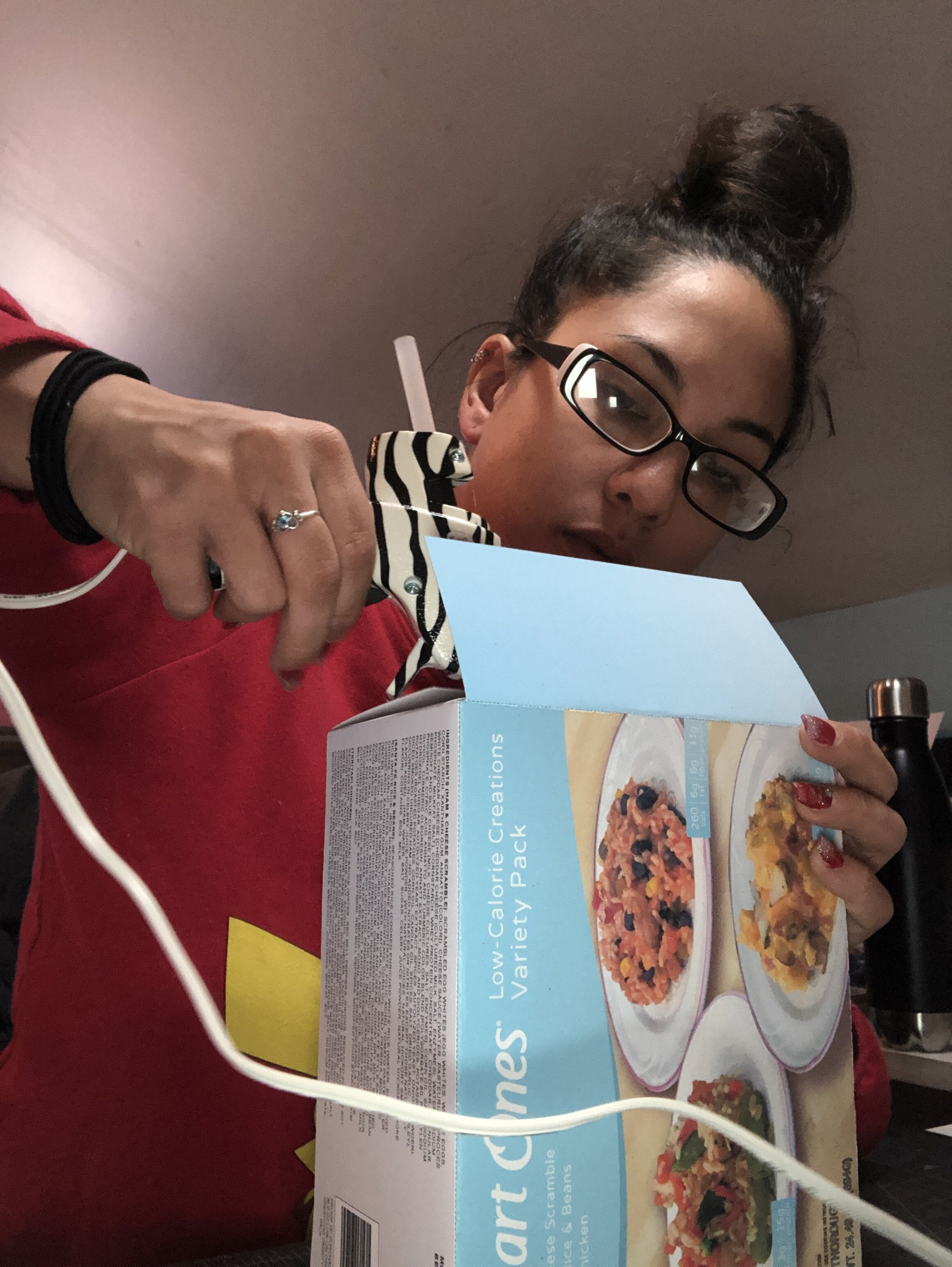While texting a fellow classmate/friend about tomorrow’s career fair, I asked her if she needed me to print anything out for her: portfolio, resume, etc. She said she has all of that, so she’s good. I reminded her, “Don’t forget your business cards!” This was assuming she had at least gotten ones from the school of business when they were offered to us last semester. “I don’t have any!”
Feeling like business cards are important, I asked her, “Do you want me to whip up some quick ones for tomorrow?” She gratefully accepted and I decided that for today, this would be my design quickie. I had to raid my stash of papers and stocks to see if I had any white cardstock. Unfortunately, I only had light gray, and because I have a 6-cartridge photo printer that does not employ white ink, gray was not an option. However, I did have a pad of bristol vellum. Although it’s textured and not ideal for inkjet printing, it was the best I could do with short notice. I pulled out that pad, a cutting mat, my light tablet, my last pack of Letratac and a box of laminating sheets.
The front selections for Jojo’s business cards.
I went to work on these cards, keeping in mind what I did for her writing portfolio—she used gray, black and red. Although red can be beautiful, I felt like it would have been too strong of an accent color here, so I just went on with grays and black. When i finished a selection of three fronts and three backs, I emailed her a screenshot of her selections and let her pick. She liked “1 and 2”, so that’s what we went with.
I had her confirm her information was correct and went to work printing. The ink did just as I thought it would: it bled a little bit and the texture of the paper made the ink look spotty. It didn’t look terrible, but it didn’t look as good as it would have on a smooth, coated paper. An option I had would have been to print the faces on presentation paper, then adhere it to the bristol, laminate, then cut. However, I felt like for a quick, last-minute project, that would have been a bit extra.
Of course, my printer decided that it would not listen to my computer’s settings and print these sheets double sided, thus rendering more work for me in assembly. No worries. I printed the first set on two separate sheets, forgetting that I could just flip the sheet, re-feed it and it would be A-OK.
I took paper tape—you know, the kind you buy at Walgreens in the bandage section—and after using my overhead snake-neck lamp to put the sheets together and line them up, taped the sheets together on one end like a hinge and attempted to apply the Letratac to the back of one sheet.
I learned the hard way that my Letratac is so old, it doesn’t work as well as it would have ten years ago, brand new. Luckily, I had Tombow adhesive dots in that little pink handheld doodad and, with the help of my light tablet, applied adhesive on the backs of the cards, around the perimeters and then in the middles for reinforcement. I closed the papers onto each other, and decided it would be safer for me to hand cut these rather than use the guillotine for fear of squishing the ends.
I hand-applied the laminate to both sides of these now two-ply cards and began to cut them out by hand.
48 plus cuts later, the first dozen was done. For the second set, I decided to flip the paper this time for printing, which allowed me to have single-ply cards, and to cut down production time on them. Print, laminate, cut, done.
I’m pretty happy with how they came out for a quick 10-minute design and hour long assembly process. They’re not professional and if I had my way, I would have had a better stock of paper to choose from, as well as a printer with a heater so the bleeding would be minimal, but alas here we are. I worked with what I had, and after a few photos were sent, my classmate/friend is a happy camper and now she has 24 business cards to pass out at the fair tomorrow.








